F-15A ‘Baz’ Upgraded Cockpit Seen In Rare Israeli Air Force Photo (Updated)
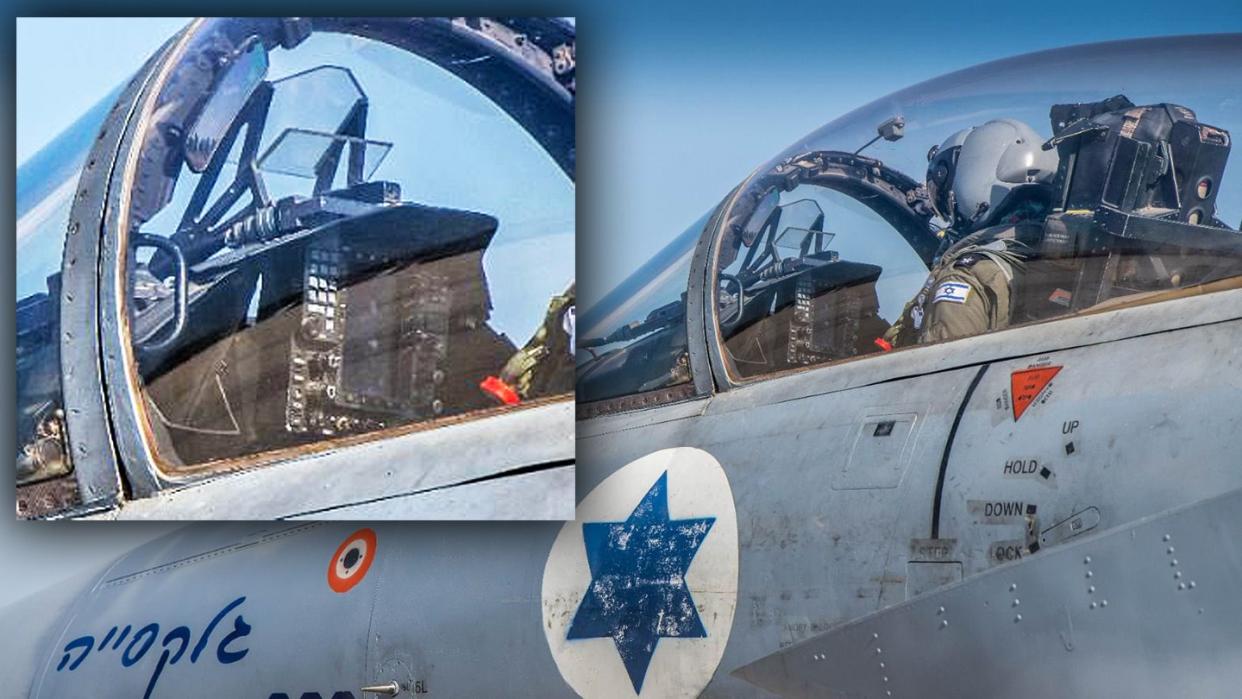
As the war in Gaza continues, Israel has released a carefully selected stream of photos and videos showing some of its most capable assets in action. One interesting recently published photo provides a very rare view inside the cockpit of an F-15A ‘Baz’ fighter, shedding some light on the extent of the upgrades that these aircraft have been put through by the Israeli Air Force (IAF).
Before we discuss the photo, it’s important to note that Israel’s aging F-15A-to-D fleet is still seen as a prized resource by the IAF. These heavily modified aircraft are central to the air arm’s ability to conduct long-range operations as well as homeland defense and they have been used as multi-role air-to-air and air-to-ground platforms for decades.
Now onto the photo in question. It was published yesterday on X by the IAF. It was presented alongside a caption that described recent missions flown by undisclosed “Air Force fighter jets” against “an operational headquarters and launch site of the terrorist organization Hezbollah in southern Lebanon.”
Pictured is the cockpit section of F-15A serial 692, which was flying combat missions with the IAF as long ago as 1979, when its cockpit would have looked significantly different. On September 24 that year, pilot Relik Shafir used this jet to shoot down a Syrian MiG-21 — a feat reflected in the kill marking on the nose. The aircraft also wears the individual name Galaksiyah, or Galaxy in Hebrew. Meanwhile, IAF F-15A-to-D aircraft are collectively known by their Hebrew name Baz, or Falcon.
The most fascinating aspect of the photo, however, is the view inside the modernized cockpit. This is dominated by a large, portrait-format multifunctional display (MFD) in a totally revised center console. This large MFD is surrounded by buttons that appear to replace the knob-strewn up-front control panel of the original F-15A configuration. There is an additional data-entry pad that would allow the pilot to interface with the aircraft’s systems, weapons, and other payloads on the upper left. Overall, this appears to be a remarkably efficient and highly logical upgrade. The F-15A-to-D’s traditional radar display with its protruding shade is also seen on the left.

This is what this F-15A’s cockpit looked like when it was delivered over 45 years ago:
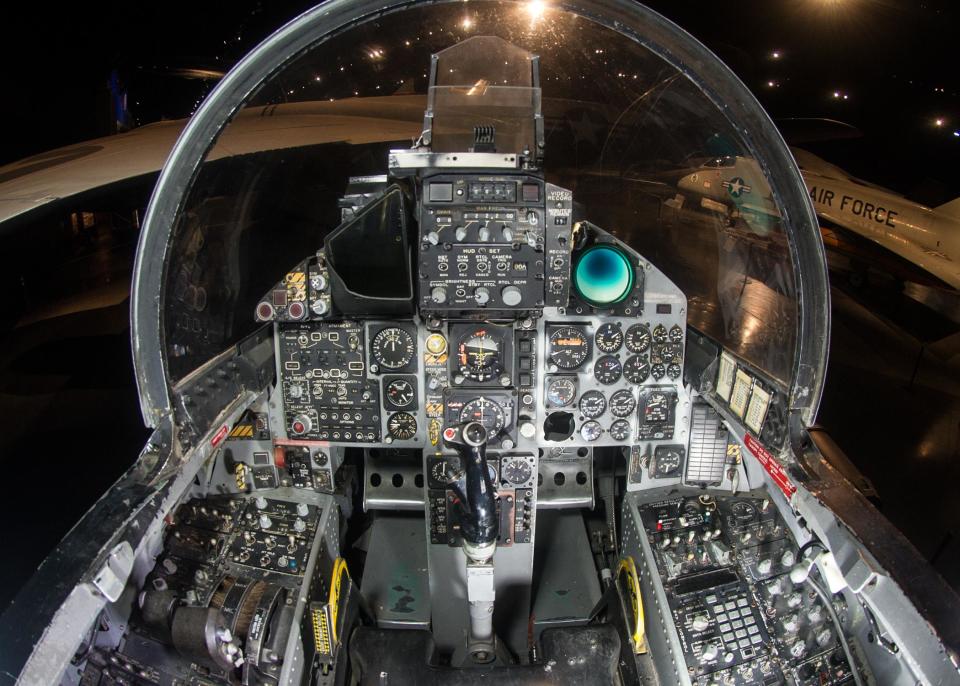
The rest of the IAF F-15’s cockpit configuration is not visible, but it could include another smaller MFD to the lower left, similar to the configuration U.S. Air Force Eagles have flown with for decades now after a mid-life update. More recently, U.S. F-15C/Ds also received a horizontal-format wide-area display, located right, which is a drastic improvement. The U.S. Air Force configuration also retains the old up-front control panel. You can read more about the upgrade work undertaken in the cockpit of American F-15Cs here.
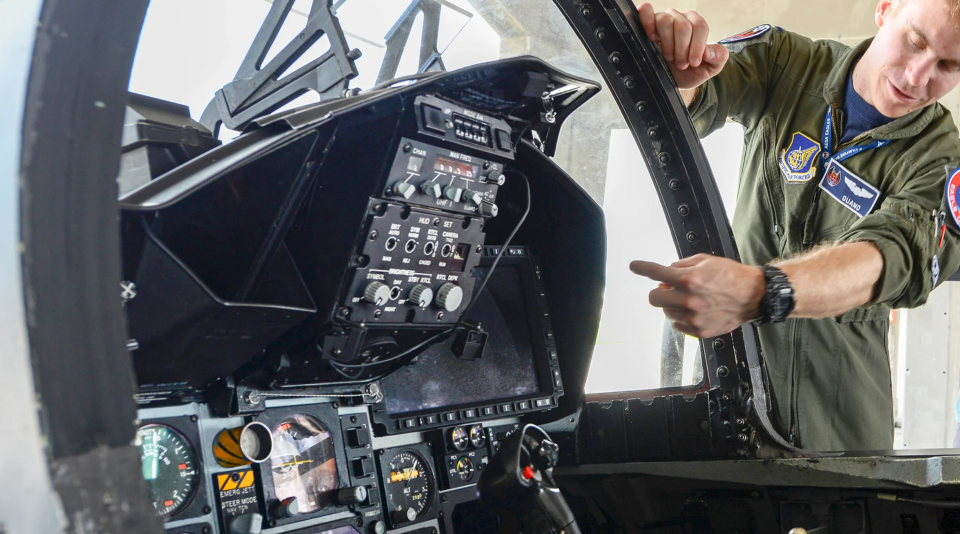
https://www.youtube.com/watch?v=zikI2fazPLo
Looking further forward, maximizing the ability to display information from an ever more data-rich combat environment to a fighter’s pilot is becoming of increasingly critical importance. The latest of the F-15 family, including the USAF’s F-15EX, feature wide-area displays with powerful display processors that span the entire forward control panel of the cockpit.
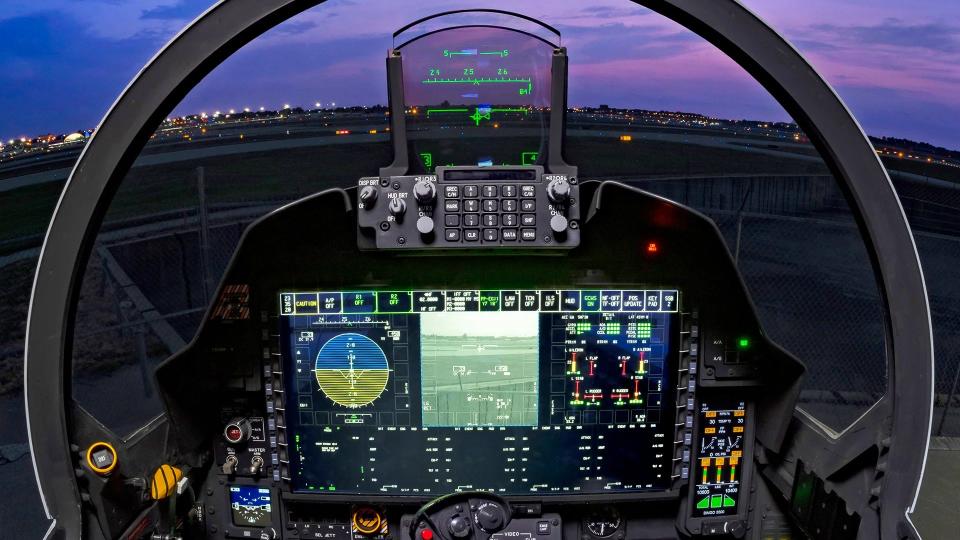
The details of Israeli Baz cockpit upgrades are extremely limited, making the release of this photo all the more interesting.
Back in 2003, some details of the scope of the Baz modernization were revealed. Known as Baz Meshopar (Baz Improved), or as the F-15 Avionics Upgrade Program (AUP), the work was carried out by the IAF together with Elbit Systems and was launched in 1995.
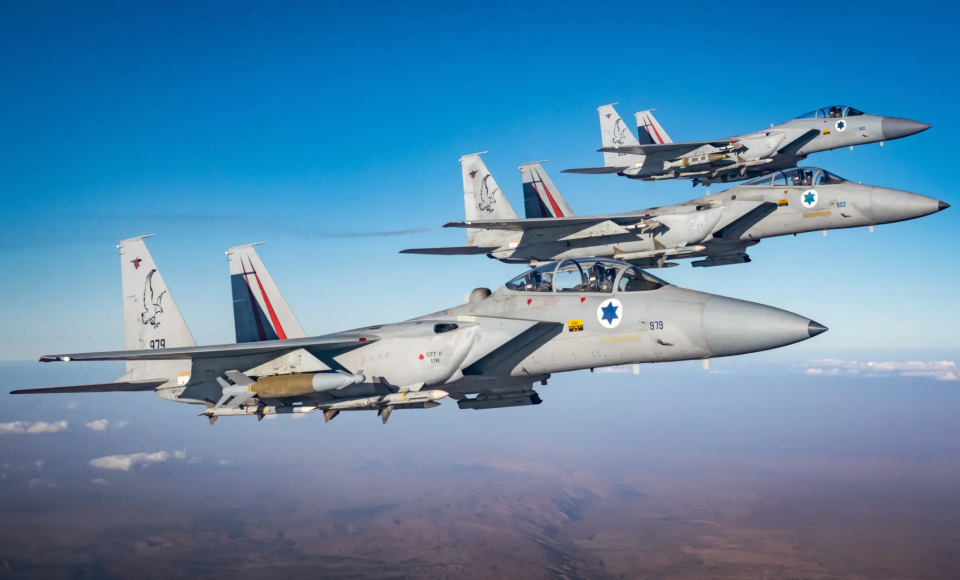
Although Baz Meshopar is said to have some similarities with the U.S. Air Force’s F-15 Multi-Stage Improvement Program (MSIP), it includes a significant proportion of Israeli-made electronics and subsystems, something that is by now commonplace for Israeli programs of this kind.
Baz Meshopar included integration of the AIM-120 Advanced Medium-Range Air-to-Air Missile (AMRAAM), thanks to a new avionics databus and hardware and software changes. However, the earlier AIM-7 Sparrow missile is sometimes also still carried, as you can read about here.
Furthermore, as Janes reported at the time, Baz Meshopar “includes installation of three new multifunction displays provided by Elbit Systems. The aircraft had earlier been equipped with Elbit DASH (Display And Sight Helmet) multifunction display helmet systems, supporting the Rafael Python 4 air-to-air missiles.”
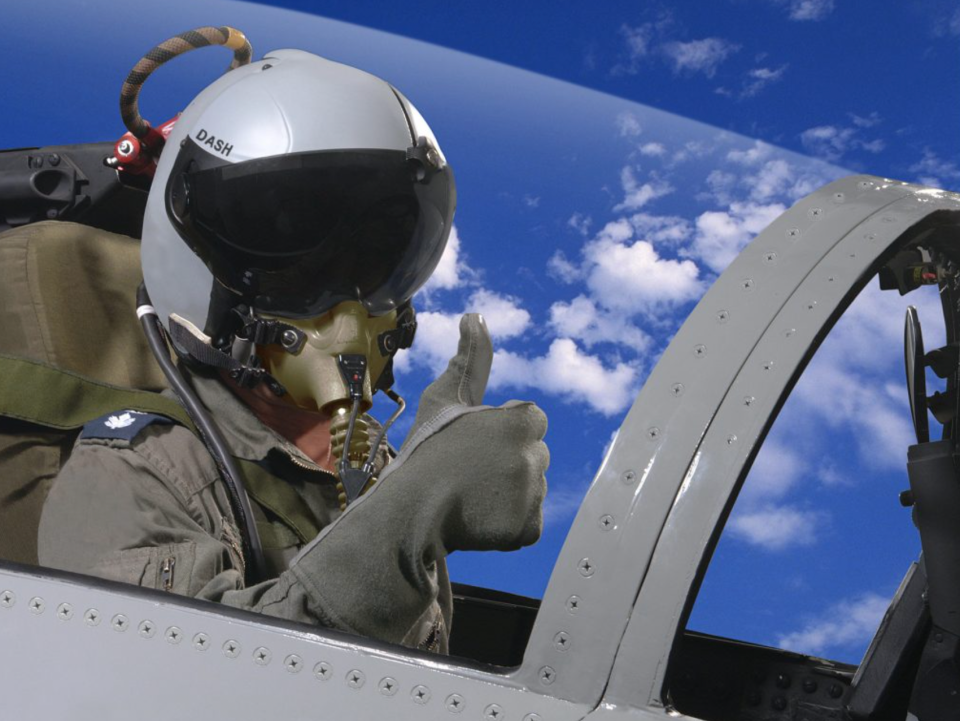
This suggests that the upgraded Baz cockpit may feature two more displays, not seen in this photo. However, this configuration may specifically refer to the F-15B and F-15D, the two-seaters being the first to complete the Baz Meshopar upgrade. But it is unclear when this central display and interface upgrade occurred, with some indications that it was installed in the last decade.
While adding AMRAAM, DASH, and Python 4 to the IAF’s ‘fighter Eagles’ was significant, it’s important to remember that these aircraft have a very important air-to-ground role. Indeed, the Baz Meshopar was aimed to bring to the ‘gray’ F-15A-to-D aircraft some of the capabilities offered by the F-15I Ra’am, the IAF’s long-range strike specialist. As such, it can carry a wide array of air-to-ground ordnance.
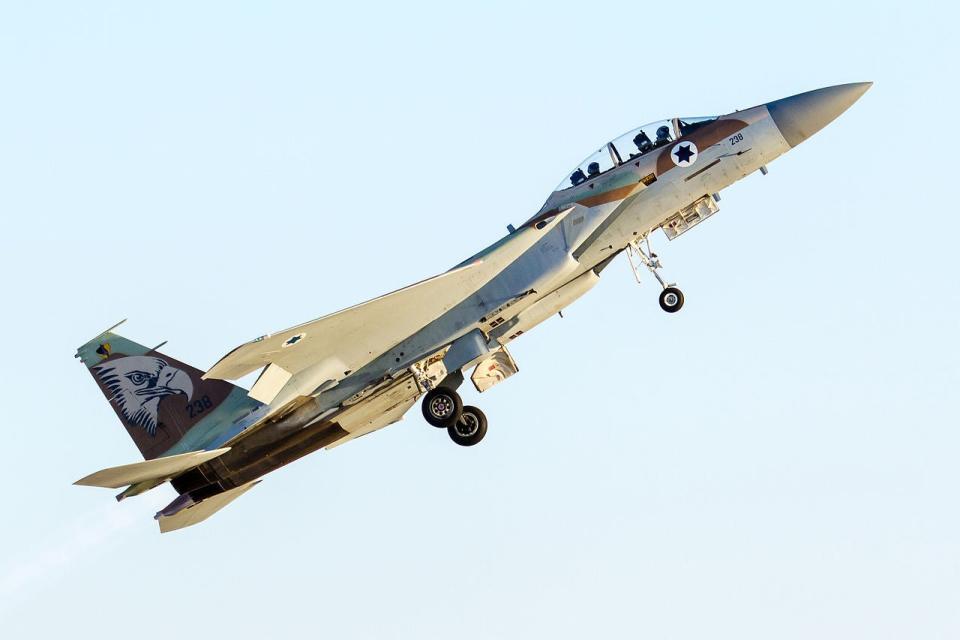
Today’s Baz fleet can flex between air-to-ground missions and air superiority as the situation demands. While its air-to-air prowess is widely publicized, as we mentioned at the beginning of this piece, the Baz has been a multi-role platform for many years, dating back well before the F-15E Strike Eagle was introduced. You can read about this unique history here. It’s also worth noting that the Israeli F-15A-to-D fighters retain their conformal fuel tanks (CFTs) — a feature no longer found on U.S. Air Force F-15C/Ds — providing a very useful increase in range.
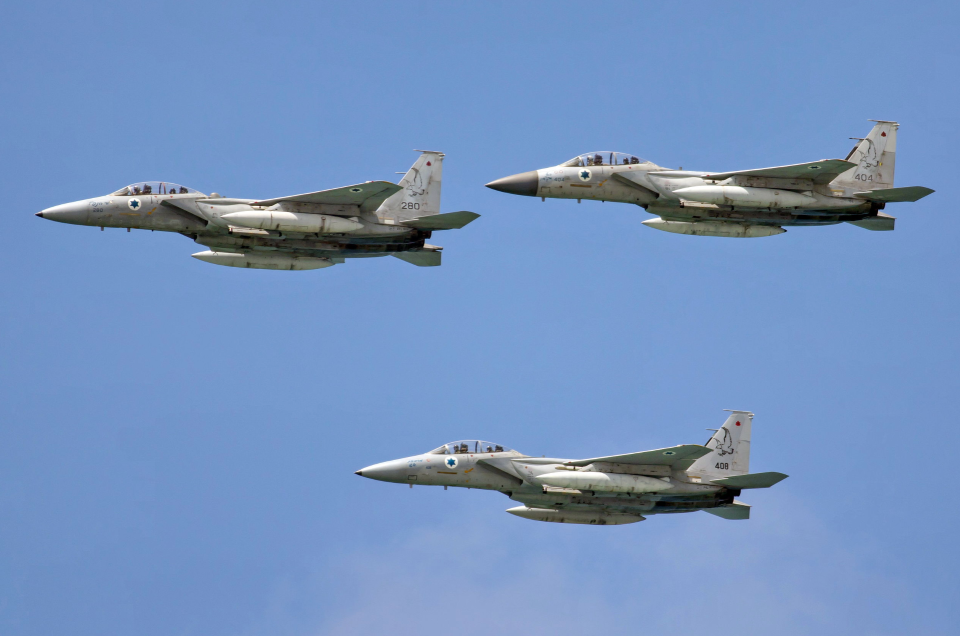
Two frontline units, 106 Squadron “Tip of the Spear” and 133 Squadron “Knights of the Twin Tail,” today operate the Baz from Tel Nof Air Base in central Israel, just south of Tel Aviv.
In terms of the cockpit upgrade, the new display and control panels undoubtedly help the pilot manage an increased mission workload, especially in the case of the single-seat F-15A and F-15C. As well as providing better situational awareness while engaging targets in the air and on the ground, the upgraded cockpit will also likely provide advantages for the Baz during non-traditional command and control missions, in which the aircraft can call upon its sensors and electronic warfare systems for the mutual benefit of a strike package over enemy territory.
In particular, this is a role assigned to the two-seat F-15B/D, which also has a high-bandwidth satellite communications hub capability. This can provide a critical forward communications node for fighter aircraft, connecting disparate formations with command and control nerve centers in Israel, even while operating far from home. The satcom antenna can be seen installed behind cockpit canopy and environmental control system heat exchanger on the two seat Baz jets.
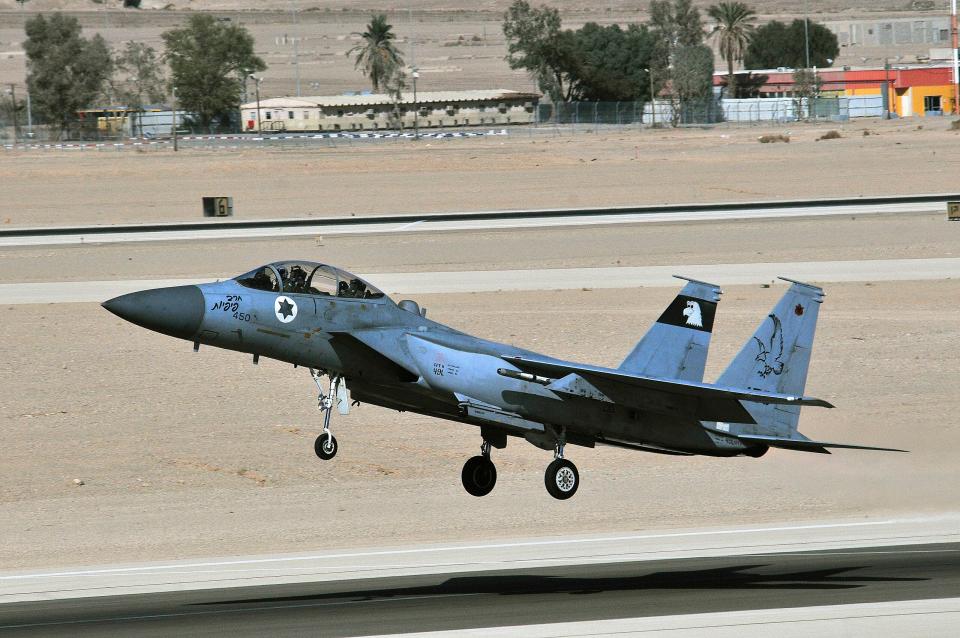
The war in Gaza has demonstrated that the IAF’s surviving ‘gray’ F-15A-to-D fighters retain their importance, despite them being among the oldest assets in service. An advanced cockpit, alongside a raft of other upgrades, ensures that the Baz remains very much at the top of its game, more than four decades after first going into combat.
Update 6:35 PM EST
We have found additional information on the F-15 Baz cockpit upgrade. The Up Front Control Display (UFCD) that replaces the old HUD control panel is specifically designed for the F-15 and is from avionics firm Astronautics. It has a 5.7-inch color flat-panel LCD multifunction display in the center. The display has day, night, and night vision goggle (NVG) compatible brightness modes.
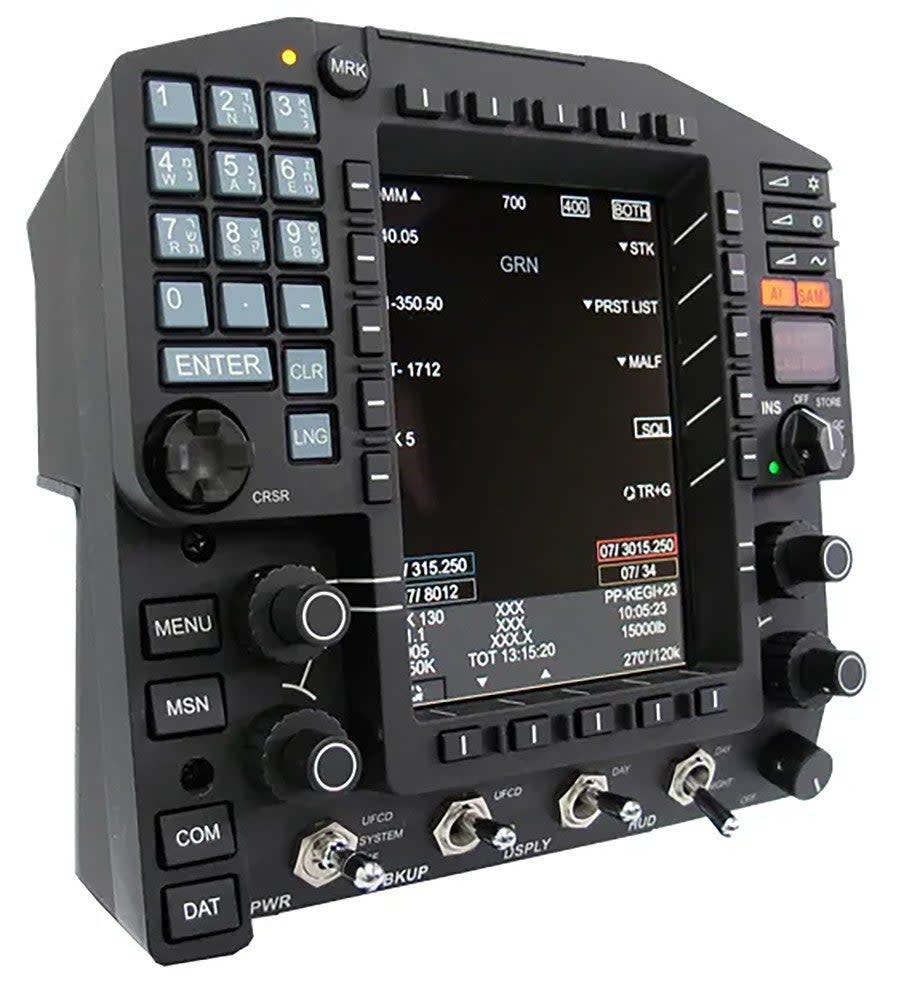
There are also "software selectable switches" – 20 in total – above, below, and to either side of the display. It also has a numeric keypad and an array of other buttons and switches that can be programmed as desired. The UFCD "supports modern operation of aircraft’s [communications] devices," at least in part, according to Astronautics.
Contact the author: [email protected]